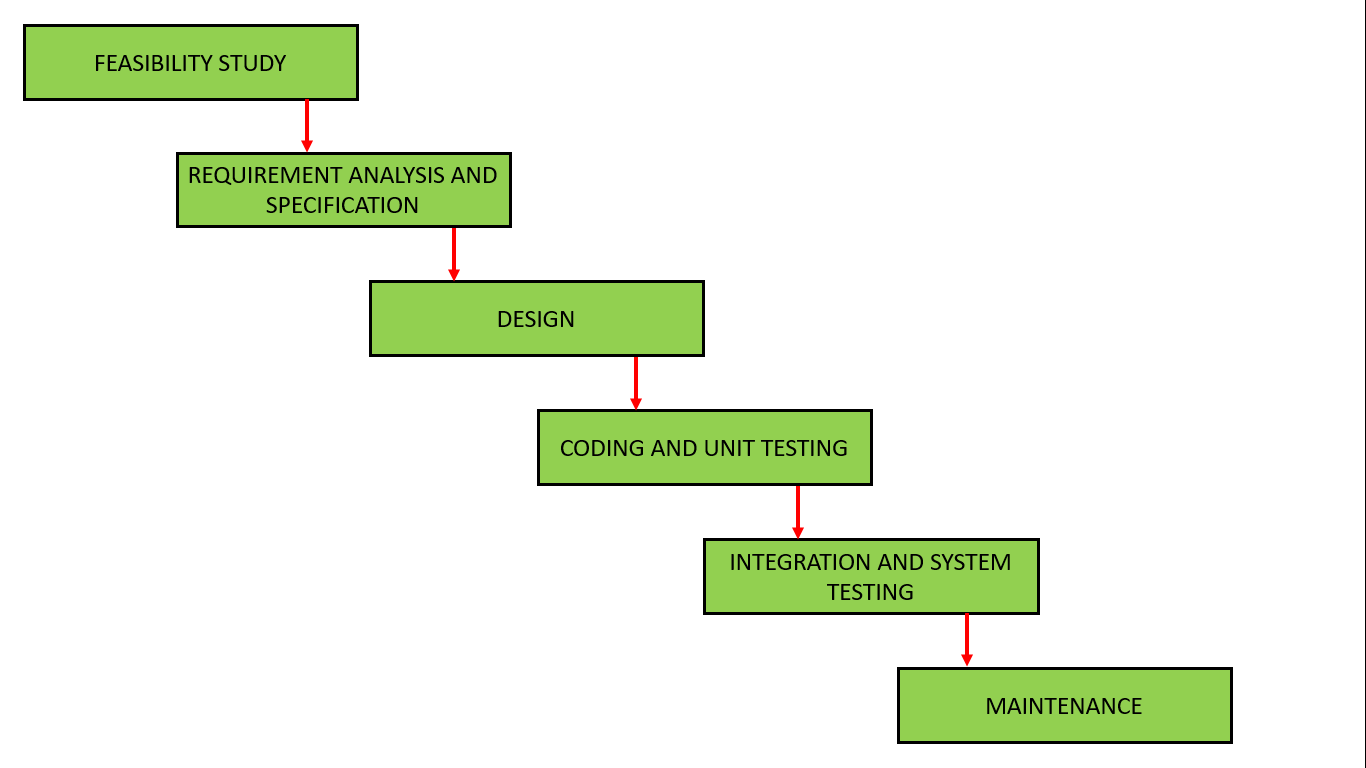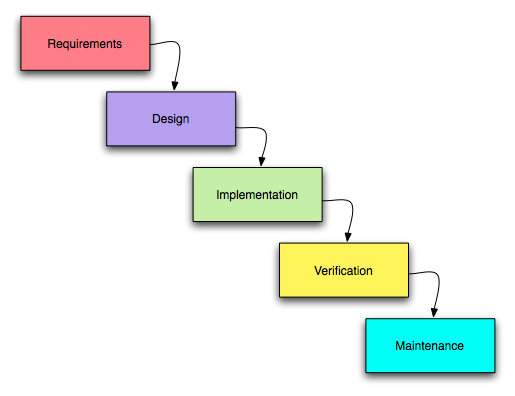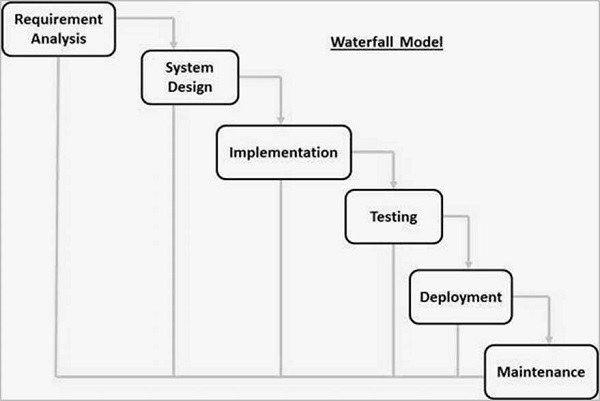Explain Different Phases of Waterfall Model
The case may be that an enterprise could have many different on-going projects. Getting and Staying motivated.

Software Engineering Classical Waterfall Model Geeksforgeeks
The waterfall model is a linear process model that divides development processes into successive project phases.

. They are briefly explained below. This model uses many of the same phases as the waterfall model in essentially the same order separated by planning risk assessment and the building of prototypes and simulations. Let us understand the concept of Waterfall model with example of a banking application for illustrating the topic.
Phases of Waterfall Model in Software Engineering. 4 States the importance of Design phase. As each phase completes the project spills over into the next step.
The Waterfall model assumes that once the initial requirements are set and every goal has. It is important to have a well-structured and organised project. According to the Waterfall method the software development process goes through all the SDLC phases with no overlapping and consists of a single development cycle.
It is used in large applications and systems which built-in small phases or segments. Connected Teaching and Learning. One advantage of the Waterfall model is each phase can be evaluated for continuity and feasibility before moving on.
The waterfall model is used especially in software development. Life cycles are fundamental to the management of project-work. Linear waterfall life cycles are.
Connected Teaching and Learning from HMH brings together on-demand professional development students assessment data and. According to the fact that it is a linear-sequential life cycle model any phase in the development process can begin only if the previous one is complete. On the surface RUP appears quite similar to Waterfall however it has more of an iterative developmental approach.
This method is typically seen in the areas of construction development and engineering design because each step must get. Each task within those phases is divided into nine disciplines. In contrast to iterative models each phase is run through only once.
V-Model software development - an extension of the waterfall model Unified Process UP is an iterative software development methodology framework based on Unified Modeling Language UML. Let us assume that the Citibank is planning to have a new banking application developed and they have approached your. 3 Explain Phases of the waterfall model.
This incremental development is a major part of agile approaches and reflects the way that we resolve software. The five phases. Each set of circumstances depends on the deliverables that came from the previous step as it corresponds to a specialization of task-oriented approaches.
Its limited in speed however since one phase must finish before. Each phase requires deliverable from the previous phase in a life cycle of software development. Email protected Personalize your virtual model then add your current weight and goal weightsee how different you will look.
Easy to explain to the users. Before proceeding to explain the waterfall model with examples lets go over the basics of the waterfall model and what exactly its supposed to achieve. As a linear or sequential model the waterfall model has a number of phases each of which must be completed before moving.
The results of each preceding phase are used as assumptions in the subsequent phase. It makes the development team able to design create and deliver a high-quality product. It is then converted into a logical structure which needs to be.
Teams are large and everyone on the team business analysts. Been c lea red of any ambiguities there is an un obstructe d road which the development. The five-main phase of waterfall model are.
Rather than adapting your organization to Waterfalls guidelines later consider these limitations to assess whether. UP organizes the development of software into four phases each consisting of one or more executable iterations of the software at that stage of development. The waterfall model was one of the first models to be introduced in project management.
The project team can actually take which phases and disciplines meet their needs and discard the rest. To show what type of quality c hecks are made in order to decide whether the. These project each come with their own sprints explained soon different product lines varying internal and external customers and different business needs.
There are different phases within SDLC and each phase has its various activities. Waterfall is a respected methodology but lately its faced criticism for being an outdated model. The disadvantages of the Waterfall model.
Each phase must be completed before moving on to other phases. SDLC describes various phases of software development and the order of execution of phases. Software artifact dev elop ed in a.
The methodologys limitations become more apparent depending on the size type and goals of the project its guiding. This is a tried-and-tested model and it works. The waterfall model breaks down project activities into linear sequential phases.
AnalysisDesignDevelopment Implementation Evaluation An additional approach to improve this model is the use of rapid prototyping where receiving continual or. The choice of deployment approach will play a key part in selecting the most suitable form of life cycle. W e explain the different phases and provide a selection of checklist-items.
Different approaches can be utilised for deployment depending on the desired outputs benefits and outcomes and the expected uncertainty novelty and risk appetite. These six phases conclude the full Agile method lifecycle model. The Waterfall SDLC model is the classic method of development.
The requirements is specified in the form of a document. There are several phases in the waterfall model. Incremental Development Model Incremental development is established on the indication of developing the primary execution showing this to customeruser proxy and changing it over some versions until the tolerable system has been developed.
Implementation.

The Traditional Waterfall Approach

Waterfall Model Or V Model Sdlc Phases And Its Disadvantages Pm Vidya

0 Response to "Explain Different Phases of Waterfall Model"
Post a Comment